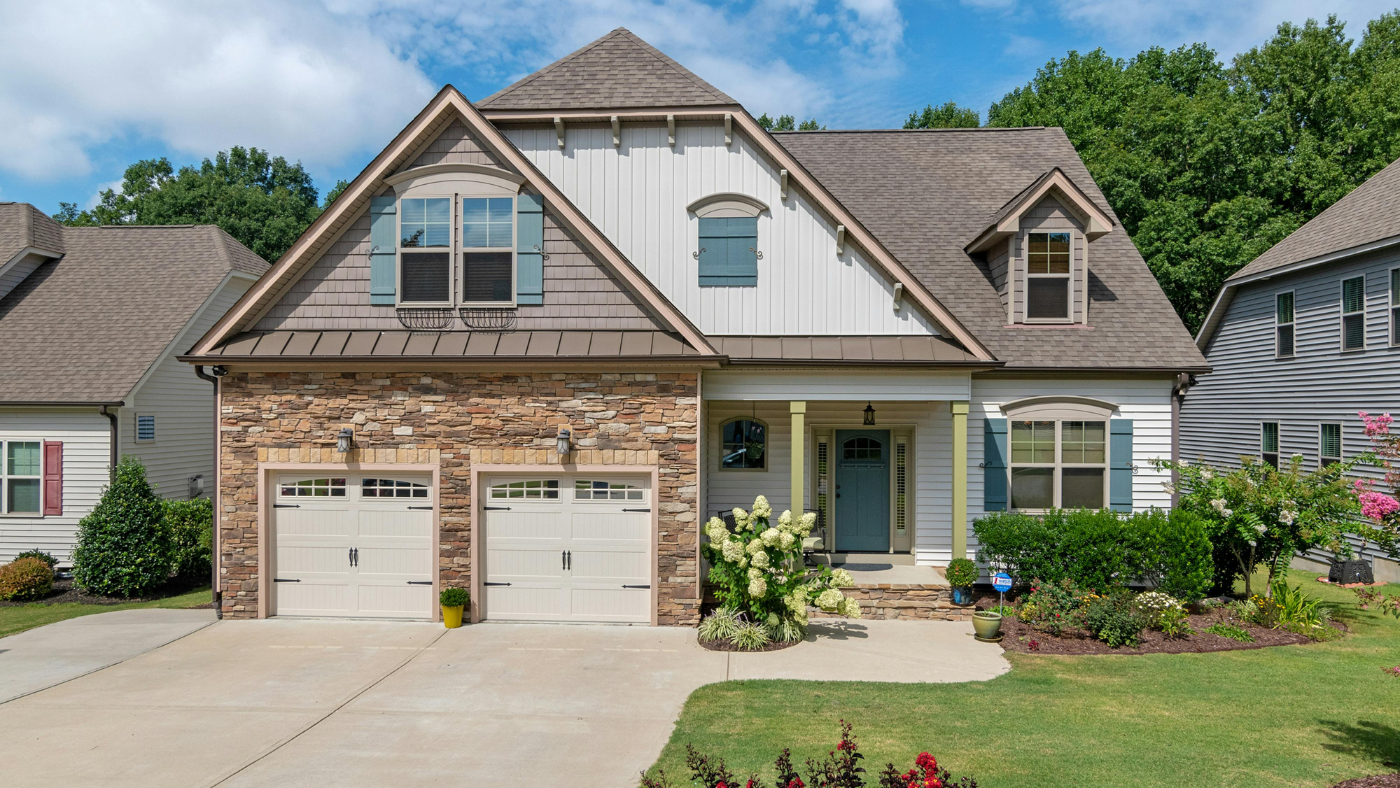Urban Growth BTR (Build to Rent) in Canada is reshaping the rental market by addressing housing shortages in major cities like Toronto, Vancouver, and Montreal. Driven by rising demand from newcomers, students, and families, BTR offers professionally managed, amenity-rich rental communities that provide stability and flexibility. As Canada faces ongoing affordability challenges and demographic shifts, BTR stands out as a promising solution for renters and investors alike in 2025.
- How to Start a Build to Rent Project: A Step-by-Step Guide
- Build To Rent Marketing: Essentials for Build-to-Rent Success
- Growth Drivers in Build to Rent (BTR) Sector
Urban Growth BTR in the UK, US, and Emerging Trends in Canada

The Build to Rent (BTR) sector is transforming urban housing markets worldwide, with the UK and US leading the charge and Canada quickly catching up in 2025. This growth presents exciting opportunities for newcomers seeking quality rental homes and investors looking for stable, long-term returns.
United Kingdom
The UK has become a global leader in BTR development. As of early 2025, more than 127,000 BTR homes have been completed, representing a 16% increase from the previous year. Cities like Manchester have seen BTR properties make up nearly 20% of the private rental market. The sector is expanding beyond traditional apartments to include single-family rentals and co-living spaces, appealing to a wider range of renters.
With over 56,500 units currently under construction and 126,000 more in planning, the UK market is poised for continued growth. Institutional investors are fueling this expansion, with investments expected to reach £6 billion in 2025, reflecting strong confidence in the sector’s profitability and resilience.
United States
The US BTR market is experiencing rapid growth, especially in Sun Belt cities such as Phoenix, Dallas, and Atlanta. These areas are seeing large-scale developments of purpose-built single-family rental homes designed exclusively for long-term renters. In 2024, a record 39,000 single-family rental homes were completed, a 15% increase from the previous year, with over 100,000 units currently under development.
Rising home prices and mortgage interest rates have made homeownership less affordable, driving demand for professionally managed rental communities. BTR offers renters more space, privacy, and amenities compared to traditional rentals, making it increasingly popular among millennials, Gen Z, and downsizing baby boomers. Institutional investment in US BTR is growing rapidly, with the sector projected to expand at a compound annual growth rate exceeding 12%.
Canada
Canada’s BTR market is emerging as a vital solution to the country’s housing challenges. Urban centers like Toronto, Vancouver, and Montreal are experiencing surging demand for rental housing due to rising home prices and stricter mortgage rules. More Canadians are choosing to rent long term, increasing the need for high-quality, purpose-built rental communities.
Developers are responding by focusing on BTR projects that offer modern amenities, professional management, and flexible lease terms. Government incentives, including tax breaks and waived development charges for affordable rental units, are encouraging more investment in this sector. This shift is particularly beneficial for newcomers and young professionals who seek secure, convenient, and community-oriented urban living.
Why Is BTR Growing in Urban Areas? Trends and Situation in 2025
Several key factors are driving the rapid expansion of Build to Rent in urban areas in 2025:
- Changing Demographics and Lifestyle Preferences:
Younger generations, especially millennials and Gen Z, prefer renting over buying due to financial constraints like student debt and high home prices. They value flexibility, convenience, and access to amenities such as gyms, coworking spaces, and social areas. At the same time, many baby boomers are downsizing and opting to rent to avoid the responsibilities of homeownership, creating a diverse renter base for BTR communities. - Rapid Urbanization:
Urban centers continue to attract people seeking employment, education, and lifestyle benefits. This population growth intensifies demand for rental housing in cities where land and housing supply are limited. BTR developments provide a scalable solution by delivering professionally managed rental homes designed to meet the needs of urban residents. - Housing Affordability Challenges:
Escalating home prices and rising mortgage rates have made buying a home increasingly difficult for many people in Canada, the UK, and the US. BTR offers an attractive alternative by providing rental housing that combines the privacy and quality of ownership with the flexibility of renting. This helps address the affordable housing shortage and supports more inclusive urban growth. - Professional Management and Institutional Investment:
Unlike traditional rental properties, BTR communities are built and managed by professional developers and operators who ensure high standards of maintenance, security, and resident services. This professionalization attracts institutional investors looking for stable, long-term income streams. Government policies and incentives also support BTR development, making it a financially viable and socially beneficial housing model. - Flexibility and Community Living:
BTR communities offer renters the freedom to move without the complications of selling property, ideal for people with dynamic lifestyles or careers. Additionally, these developments often include shared amenities and communal spaces that foster social interaction and a sense of belonging, enhancing the overall living experience.
The Role of BTR in Urban Revitalization

Build to Rent (BTR) developments are increasingly recognized as powerful catalysts for urban revitalization. By transforming underutilized or neglected urban areas into vibrant, livable communities, BTR projects contribute to both social and economic renewal. Below, we explore how BTR plays a crucial role in increasing housing supply and improving infrastructure and amenities in urban centers.
Increasing Housing Supply in Urban Areas
- Addressing Housing Shortages:
BTR developments respond directly to the growing demand for rental housing in cities, especially as urban populations rise and more people, including young professionals and newcomers, prefer renting over buying. By delivering large-scale, purpose-built rental units, BTR projects help alleviate chronic housing shortages in urban areas that traditional housing markets struggle to meet. - Rapid Delivery of New Homes:
Unlike traditional for-sale developments, BTR can deliver hundreds or even thousands of rental units simultaneously, significantly accelerating the availability of new housing stock. This rapid increase in supply is vital for cities facing urgent housing deficits. - Revitalizing Neglected Neighborhoods:
Many BTR projects are strategically located in areas that were previously underdeveloped or economically stagnant. By introducing modern, high-quality rental housing, these developments breathe new life into such neighborhoods, attracting residents and stimulating further investment. - Diverse Housing Options:
BTR communities often offer a range of unit types and price points, catering to a broad spectrum of renters including singles, families, and retirees. This inclusivity supports the creation of mixed-income communities, which are essential for sustainable urban revitalization.
Improving Infrastructure and Amenities
- Enhancing Community Amenities:
BTR developments typically include a variety of shared amenities such as parks, green spaces, fitness centers, retail outlets, and recreational facilities. These features improve the quality of life for residents and create attractive, community-oriented living environments. - Stimulating Urban Infrastructure Upgrades:
The presence of new BTR communities often encourages improvements in surrounding infrastructure, including transportation links, public services, and utilities. These upgrades benefit not only residents of the BTR developments but also the wider urban area, supporting broader economic and social growth. - Promoting Sustainable Urban Living:
Many BTR projects incorporate environmentally friendly design and energy-efficient technologies, contributing to urban sustainability goals. This includes reducing pollution, promoting sustainable mobility, and balancing residential and professional spaces in a harmonious way. - Catalyzing Further Investment:
The development of BTR communities can create a ripple effect, attracting additional private and public investment into the neighborhood. This can lead to new commercial ventures, improved public spaces, and enhanced safety, all of which contribute to the overall revitalization of the urban area.
What Are the Risks and Returns of Investing in BTR?

Investing in Build to Rent (BTR) offers a unique combination of risks and returns that differ from traditional residential property investments. Understanding these factors is crucial for investors considering this growing sector.
- Long-Term Investment Horizon:
Unlike build-for-sale projects, BTR investments typically require a commitment of capital over a long period, often 10 to 30 years. This means investors do not see immediate returns from sales but benefit from steady rental income and potential asset appreciation over time. - Stable and Predictable Income:
BTR properties are designed for long-term rental, often attracting tenants who sign multi-year leases. This results in more stable cash flows and lower vacancy rates compared to scattered private rentals, making BTR attractive to institutional investors like pension funds and sovereign wealth funds seeking steady income. - Rental Yield Potential:
In markets like the UK, average rental yields for BTR have been strong, with figures around 6.9% reported recently. Rents have been rising faster than house prices in many areas, supporting robust returns for landlords and investors. - Operational Costs and Management:
BTR developments typically incur higher operational costs than traditional buy-to-let properties due to professional management, maintenance of communal amenities, and tenant services. Effective management is essential to maintain tenant satisfaction and asset value. - Market and Regulatory Risks:
Delays related to building safety regulations and permitting can pose significant risks to project timelines and costs, as seen in the UK market. Additionally, changes in government policies or tax treatments can impact profitability and investor confidence. - Land Acquisition and Development Challenges:
High land prices, especially in major urban centers, can make BTR projects difficult to launch. Developers often face competition from build-for-sale schemes, which may offer quicker returns, putting pressure on BTR viability. - Economic Sensitivity:
While BTR offers some resilience during market downturns due to rental demand, broader economic factors like interest rate fluctuations and employment trends can affect occupancy rates and rental growth.
In summary, BTR investments offer attractive, stable returns with long-term growth potential but require careful consideration of operational complexities, regulatory environment, and market conditions.
The Build‑to‑Rent Market in Some Urban Areas in Canada
Canada’s Build to Rent market is gaining momentum, particularly in major urban centers, driven by demographic shifts, housing affordability challenges, and growing institutional interest.
- Urban Demand Surge:
Cities like Toronto, Vancouver, and Montreal are experiencing strong demand for rental housing as rising home prices and mortgage restrictions push more residents toward renting. Newcomers and young professionals are key drivers of this trend. - Purpose-Built Rental Growth:
Developers are increasingly focusing on purpose-built rental projects designed to meet the needs of long-term renters, offering modern amenities, professional management, and flexible lease options. - Government Support:
Various incentives, including tax breaks and waived development charges for affordable rental units, are encouraging investment in BTR developments, helping to address Canada’s housing shortage. - Investor Interest:
Institutional investors are attracted by the stable income streams and growth potential of BTR properties. The sector is seen as a resilient alternative to traditional residential investments, especially amid fluctuating housing markets. - Challenges Ahead:
Despite positive momentum, the Canadian BTR market faces hurdles such as rising construction costs, regulatory complexities, and competition for land in prime urban locations. Navigating these challenges will be critical for sustained growth. - Future Outlook:
With urban populations continuing to grow and rental demand rising, Canada’s BTR sector is poised for significant expansion in the coming years. This presents a golden opportunity for investors seeking long-term, stable returns and for newcomers looking for quality rental housing in vibrant urban communities.
Features and Benefits of BTR Projects in Urban Areas

Build to Rent (BTR) developments are reshaping urban housing landscapes by offering purpose-built rental communities designed to meet the demands of today’s renters and cities. These projects bring a host of features and benefits that make them highly attractive for residents, investors, and urban planners alike:
- Purpose-Built for Renters:
Unlike traditional rental properties converted from for-sale housing, BTR developments are designed from the ground up specifically for rental living. This means layouts maximize space efficiency, privacy, and comfort, catering to the lifestyle needs of long-term renters. - Professional and Consistent Management:
BTR communities are managed by professional operators who provide reliable maintenance, security, and customer service. This level of management improves tenant satisfaction and retention, reducing vacancy rates and ensuring stable income streams for investors. - Comprehensive Amenities and Services:
Modern BTR projects often feature a wide range of amenities such as fitness centers, rooftop terraces, coworking spaces, communal lounges, children’s play areas, and package delivery services. These amenities create a lifestyle experience that rivals homeownership and fosters a strong sense of community among residents. - Flexible Leasing and Tenant Protections:
BTR developments typically offer longer lease terms with flexible renewal options, providing tenants with stability and peace of mind. Additionally, many projects include transparent rental agreements and legal protections that enhance tenant security. - Inclusive Living with Simplified Costs:
Many BTR units include utilities, internet, and maintenance fees bundled into the rent, simplifying monthly budgeting for residents and reducing unexpected expenses. - Accelerating Urban Housing Supply:
BTR developments contribute significantly to increasing the supply of rental housing in cities where demand far outpaces availability. This helps alleviate housing shortages and reduces pressure on overcrowded rental markets. - Driving Urban Revitalization:
By targeting underutilized or declining urban areas, BTR projects can stimulate neighborhood regeneration. The influx of new residents and investment often leads to improved infrastructure, retail growth, and enhanced public spaces. - Sustainability and Smart Design:
Many BTR projects incorporate green building standards, energy-efficient appliances, and sustainable materials. These features reduce environmental impact and align with growing urban sustainability goals. - Economic Benefits:
BTR developments create jobs during construction and ongoing operations, contributing to local economies. They also attract a diverse population that supports nearby businesses and services.
BTR Opportunities and Challenges for International Audiences and Newcomers in Canada
Opportunities
- Students and Newcomers Seeking Stability and Comfort:
For international students and newcomers to Canada, BTR communities offer a safe, stable, and fully serviced living environment. With access to modern amenities, legal rental protections, and flexible lease options, these developments reduce the stress of relocation and provide a welcoming urban lifestyle. - Investors Looking for Reliable Income:
BTR properties provide investors with predictable, long-term cash flow through steady rental income. The professional management and lower vacancy rates typical of BTR reduce risk compared to traditional rental investments. Additionally, growing urban rental demand and government incentives make this sector increasingly attractive. - Developers Exploring Joint Ventures and Market Entry:
The expanding Canadian BTR market presents significant opportunities for developers, especially through partnerships and joint ventures. Collaborations with local firms, institutional investors, and government bodies can help navigate regulatory environments and leverage incentives, accelerating project delivery and profitability. - Government and Community Benefits:
BTR developments align with government priorities to increase affordable and purpose-built rental housing. They support community goals by creating mixed-income neighborhoods and enhancing urban livability. - Technological Integration:
Many BTR projects incorporate smart home technologies and digital platforms for tenant services, improving convenience and operational efficiency. This tech-forward approach appeals to younger, tech-savvy renters and streamlines property management.
Challenges
- Competition with Large REITs and Institutional Developers:
The Canadian BTR market is becoming increasingly competitive, with large real estate investment trusts (REITs) and institutional players dominating major urban developments. Smaller developers and new entrants may find it challenging to secure prime land or compete on scale and financing. - High Construction Costs and Interest Rates:
Rising costs for materials, labor, and financing can squeeze profit margins and delay project timelines. Elevated interest rates increase borrowing costs, making it more expensive to fund large-scale BTR developments. - Zoning and Regulatory Delays:
Complex zoning laws and lengthy permitting processes can slow down project approvals. Navigating municipal regulations requires expertise and can add uncertainty to development schedules. - Legal Frameworks and Policy Fluctuations:
Changes in immigration policies may impact the demand for rental housing from newcomers and international students. Additionally, evolving landlord-tenant laws and housing regulations can affect operational costs and investment returns. - Market Saturation Risks in Certain Urban Areas:
In some cities, rapid BTR growth could lead to oversupply, putting downward pressure on rents and occupancy rates. Careful market analysis and strategic site selection are essential to mitigate this risk. - Tenant Expectations and Service Standards:
Maintaining high tenant satisfaction requires ongoing investment in property management and amenities. Failure to meet expectations can lead to higher turnover and reputational risks.
How to Access BTR Opportunities in Urban Areas in Canada

Choosing the Right Location and Project
- Focus on High-Demand Urban Centers:
Target cities with strong rental demand driven by population growth, immigration, and economic activity, such as Toronto, Vancouver, and Montreal. These markets offer better occupancy rates and rental growth potential due to limited housing supply and ongoing urbanization. - Evaluate Neighborhood Dynamics:
Look for neighborhoods undergoing revitalization or benefiting from infrastructure investments, transit accessibility, and proximity to employment hubs. Areas with planned public land developments or municipal support for affordable housing are especially promising. - Assess Project Quality and Amenities:
Prioritize BTR projects with professional management, robust amenities (gyms, coworking spaces, green areas), and sustainable design features. High-quality developments attract long-term tenants and reduce vacancy risks. - Understand Regulatory Environment:
Research local zoning laws, rent control policies, and government incentives that may affect project viability and returns. Cities like Toronto have frameworks supporting affordable and purpose-built rental housing on public land, which can enhance project security.
Investment or Rental Process
- For Investors:
Engage with reputable developers or institutional funds specializing in BTR to access professionally managed portfolios. Consider joint ventures or direct equity stakes in projects to benefit from stable rental income and potential capital appreciation. - For Renters:
Explore BTR communities offering flexible lease terms, legal rental protections, and bundled services for convenience and security.
For families, students, and corporate renters seeking tailored rental solutions in Canada, platforms like Naviliving provide specialized services connecting you with homes designed to fit your lifestyle and needs.
Naviliving’s marketing expertise ensures you find the right community with ease and confidence, making your transition to Canadian urban living smoother and more comfortable. - Due Diligence:
Whether investing or renting, conduct thorough due diligence on the developer’s track record, property management quality, and financial stability. Seek legal advice to understand lease agreements and regulatory protections. - Financing Options:
Investors can leverage construction and stabilization loans tailored for BTR projects, often with shorter debt terms than traditional build-for-sale developments. Government programs and incentives may also provide financing support.
Developer Pathways and Partnerships
- Joint Ventures and Partnerships:
Developers new to the Canadian BTR market can partner with local firms, institutional investors, or public agencies to navigate regulatory complexities and access land or funding. Collaborative models reduce risk and accelerate project delivery. - Engagement with Public Land Initiatives:
Cities like Toronto are mobilizing public land for affordable and market rental housing through programs such as the Toronto Builds Policy Framework. Developers can participate in these initiatives to secure sites and benefit from aligned funding and approvals. - Adoption of Modular and Sustainable Construction:
Embracing modular building techniques and green design can reduce construction time and costs, improving project feasibility in competitive urban markets. - Leveraging Technology and Tenant Services:
Incorporating smart building technologies and community-focused amenities enhances tenant satisfaction and operational efficiency, making projects more attractive to both renters and investors.
Conclusion
Build to Rent (BTR) is rapidly transforming Canada’s urban housing landscape, offering stable, high-quality rental options for newcomers, families, and investors alike. Despite challenges like rising costs and regulatory hurdles, strong demand driven by immigration, affordability issues, and changing lifestyles ensures BTR’s continued growth. By choosing the right locations, partnering with trusted developers, and leveraging platforms like Naviliving, stakeholders can confidently tap into this promising market and help shape vibrant, sustainable urban communities.




